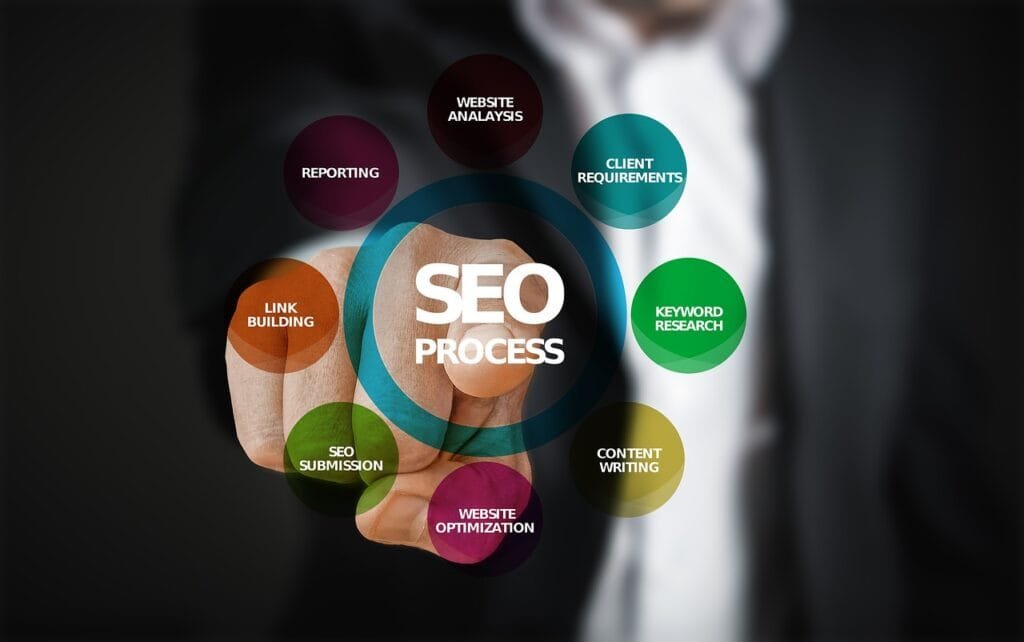The Evolution of Marketing Strategies
Marketing strategies have undergone significant transformations over the decades, as businesses have sought effective ways to reach their audiences. Understanding the evolution from traditional marketing to digital marketing is essential for making informed decisions in the current landscape.
The Role of Traditional Marketing
Traditional marketing is defined as marketing that does not rely on the internet for advertisement purposes. It has been evolving for decades, encompassing methods such as advertisements on television, radio, newspapers, and flyers (Simplilearn). This form of marketing has a long-standing history, with print marketing tracing back to ancient times and television marketing emerging in the 1900s (VEVS).
Despite the rise of digital alternatives, traditional marketing continues to hold relevance due to its wide reach and ability to create brand awareness across various demographic segments. Many consumers still respond positively to traditional marketing channels, particularly in localized markets where personal interactions and physical presence matter.
| Traditional Marketing Channel | Main Mediums | Engagement Level |
|---|---|---|
| Television | Commercials, Infomercials | Moderate |
| Radio | Ads, Sponsorships | Low |
| Newspapers, Magazines | Low | |
| Direct Mail | Flyers, Postcards | Low |
The Emergence of Digital Marketing
The advent of the internet led to the emergence of digital marketing, which revolutionized the way businesses interact with consumers. With an emphasis on technology and data-driven strategies, digital marketing provides businesses with tools to reach target audiences in innovative ways. It leverages websites, social media platforms, and mobile applications to enhance consumer engagement and facilitate real-time interactions (Institute of Data).
Digital marketing allows marketers to harness the power of data to gain valuable insights into consumer behavior, preferences, and trends. This has made it possible for businesses to measure campaign effectiveness, track key performance indicators, and refine their tactics accordingly (Institute of Data). The nature of digital marketing enables higher engagement levels compared to traditional methods, although each has its distinct advantages and applications.
As you navigate the landscape of traditional vs digital marketing, it is essential to consider how each approach can contribute to your overall marketing strategy and the unique advantages they offer.
Understanding Traditional Marketing
Traditional marketing is a well-established approach that has served brands for decades. Understanding its tools and effectiveness in the modern market is essential for any business leader.
Traditional Marketing Tools
Various tools are utilized in traditional marketing, including:
- Print Media: Newspapers and magazines serve as traditional channels for advertising, providing broad exposure for brands.
- Billboards: These are strategically placed outdoor advertisements that reach a large audience.
- Direct Mail: Personalized mail sent to potential customers can effectively reach targeted demographics.
- Television: Television ads, especially during prime time, are known for their high reach and impact, although they can be costly. A local TV channel can charge between Rs. 1 lakh and Rs. 10 lakh for a 30-second commercial, while national channels often charge significantly more (Pepper Content).
- Radio: Ads on radio stations can reach local audiences effectively, making them a reliable tool for community-focused marketing.
| Tool | Description | Note |
|---|---|---|
| Print Media | Newspapers and magazines for broader exposure | Effective for specific demographics |
| Billboards | Large outdoor advertisements | High visibility |
| Direct Mail | Personalized mail to targeted customers | Can yield high engagement |
| Television | High-impact advertising during broadcasts | Costly, especially during prime time |
| Radio | Audio advertising reaching local audiences | Good for local market penetration |
These tools still play a significant role in an effective marketing strategy. Traditional marketing methods can provide tangible experiences and remain memorable for consumers, especially in a modern marketing mix (TKG).
Effectiveness in Modern Context
Despite the rise of digital marketing, traditional marketing methods retain relevance. They continue to effectively target local markets or demographics that are less engaged online. Traditional marketing is particularly effective for reaching older audiences who may prefer tangible experiences over digital interactions (DesignRush).
The slow conversion rates associated with traditional marketing present a stark contrast to the rapid results often seen with digital strategies (Simplilearn). However, the impact of traditional marketing campaigns can be profound when executed effectively. Understanding the traditional marketing mix and leveraging the advantages inherent in traditional marketing practices is essential for any comprehensive marketing strategy.
In summary, while traditional marketing tools may seem less dynamic compared to their digital counterparts, they still hold significant power in connecting with specific audiences and creating lasting impressions. Exploring various traditional marketing strategies allows businesses to grasp their potential fully in today’s marketplace.
Exploring Digital Marketing
Digital Marketing Advantages
Digital marketing offers a range of advantages over traditional marketing methods, revealing distinct benefits that can enhance your overall marketing strategy. Some of the significant benefits include:
- Cost-Effectiveness: Digital marketing campaigns often require less investment compared to traditional methods, making it easier for businesses to adjust their budgets based on performance.
- Quick Results: Unlike traditional marketing strategies, which may take time to yield results, digital marketing provides prompt feedback on campaign effectiveness.
- Personalization: Digital platforms allow you to tailor advertisements based on user data, helping you deliver personalized messages that resonate with specific audience segments.
- Two-Way Communication: Digital marketing supports interactive engagement, enabling businesses to communicate directly with consumers, fostering relationships, and enhancing customer loyalty.
- Global Reach: Unlike traditional marketing, which typically has a local focus, digital marketing enables brands to reach a worldwide audience effectively.
| Advantage | Traditional Marketing | Digital Marketing |
|---|---|---|
| Cost | Higher | Lower |
| Speed of Results | Slower | Quick |
| Personalization | Limited | High |
| Type of Communication | One-way | Two-way |
| Audience Reach | Local | Global |
For more details on traditional methods, see our article on traditional marketing methods.
Impact on Consumer Behavior
Digital marketing has dramatically influenced consumer behavior, reshaping how companies engage with their audiences. Key impacts include:
Tailored Advertising: Digital advertising allows you to create campaigns that are specifically curated to individual preferences and interests, a capability that traditional methods lack. This personalization enhances the likelihood of conversion as consumers are more inclined to engage with content that meets their needs.
Influencer Effect: With the rise of social media platforms, influencers have become relevant figures in driving consumer purchasing decisions. Their endorsements and interactions with followers often lead to increased brand awareness and trust.
Direct Interaction: Digital marketing facilitates direct communication between businesses and consumers. This interaction not only enhances customer service but also aids in collecting valuable feedback to improve products and services.
Informed Choices: Consumers have access to a wealth of information online, allowing them to make well-informed purchasing decisions. They can compare products, read reviews, and engage with brands on social media, changing the landscape of brand loyalty and customer commitment.
For additional insights into how traditional marketing operates, refer to our article on traditional marketing examples and explore how those strategies can be integrated with modern approaches through our guide on integrating traditional and digital marketing.
Traditional vs. Digital Marketing Costs
Understanding the costs associated with both traditional and digital marketing is essential for making informed decisions regarding your marketing strategy. Below is a detailed analysis comparing the costs of traditional marketing with those of digital marketing.
Cost Analysis: Traditional Marketing
Traditional marketing methods can often incur high costs, particularly due to production and distribution expenses. For instance, the production of a television advertisement can range from $10,000 to $25,000, while broadcasting it may cost an additional $5,000 per month. Furthermore, reaching a large audience via television can be exorbitant, with average costs around $7 for every 1,000 people reached (VEVS).
| Traditional Marketing Medium | Average Cost | Audience Reach (per 1000 people) |
|---|---|---|
| TV Commercial Production | $10,000 – $25,000 | $7 |
| Monthly TV Advertising | $5,000 | — |
| Radio Advertising | $200 – $5,000 | $8 |
| Print Ads (Newspaper) | $100 – $1,000 | $20 |
| Billboards | $1,500 – $30,000 | $10 |
Cost Comparison: Digital Marketing
In contrast, digital marketing generally offers more affordability and flexibility when targeting specific audiences. The potential costs for digital advertising can range dramatically; small to medium-sized businesses may spend anywhere from $250 to $20,000 per month, depending on factors such as the advertisement’s medium, audience, and frequency of placement (Pepper Content). A key advantage of digital marketing is its capacity for scalability, allowing businesses to adjust their spending in real-time based on campaign performance and engagement.
| Digital Marketing Medium | Average Cost | Audience Reach (per 1000 people) |
|---|---|---|
| Facebook Ads | $0.25 | $4 |
| Google Ads | Varies widely | $2 |
| Social Media Ads | $250 – $20,000/month | — |
| Email Marketing | Low cost per recipient | High |
| Classified Ads | Low | High |
Digital advertising rates tend to be significantly lower than those of traditional marketing methods, allowing for quicker engagement with target audiences, which enhances measurement and profitability for businesses of all sizes (Pepper Content).
When evaluating the costs associated with traditional vs. digital marketing, you may find that traditional methods are typically more resource-intensive, while digital methods offer diverse options to suit various budgets. Understanding these distinctions will guide you in crafting a balanced marketing strategy, leveraging the strengths of both channels effectively. For deeper insights into the competition between these methods, consider exploring our articles on traditional marketing methods and digital marketing advantages.
Integrating Traditional and Digital Marketing
Businesses today must recognize the importance of combining traditional marketing with digital marketing. This integrated approach not only enhances visibility but also helps in achieving your overall marketing objectives.
Leveraging Both Strategies
You can significantly expand your market reach by leveraging both traditional and digital tactics. Combining these two forms of marketing allows you to get your message in front of a diverse audience, both online and offline. For instance, while digital marketing excels in targeting specific demographics and tracking real-time engagement, traditional marketing methods such as print ads, radio, and TV can boost brand recognition and credibility.
The table below demonstrates the benefits of integrating both marketing strategies:
| Marketing Aspect | Traditional Marketing | Digital Marketing |
|---|---|---|
| Audience Reach | Broader, local engagement | Targeted, global outreach |
| Brand Recognition | High trust and credibility | Instant and measurable visibility |
| Engagement Tracking | Difficult to measure | Real-time analytics available |
| Cost | Higher cost for ad placements | Generally lower cost per lead |
By utilizing both methods, you can achieve a holistic marketing strategy that effectively engages potential customers at different stages of their buying journey. This strategy is essential in today’s digital age, where consumers frequently conduct research and make purchases online.
Enhancing Marketing Campaigns
Integrating traditional and digital marketing also leads to enhanced marketing campaigns. By complementing your traditional marketing tools with digital strategies, you can generate more sales leads and create a more comprehensive customer journey. For example, you can use traditional advertising to promote a new product, while simultaneously running an online campaign that directs consumers to your website or social media for further engagement.
This integration also facilitates a more streamlined customer experience. For instance, you might launch a print advertisement that includes a QR code, which consumers can scan to access exclusive online content or promotions. This method not only drives traffic to digital platforms but also helps in nurturing leads effectively.
Moreover, studies have shown that combining these marketing forms helps in positively increasing customer conversions along the sales funnel (Milia Marketing). With an integrated approach, your marketing campaigns can be more impactful, ensuring your message resonates with a wider audience.
In conclusion, integrating traditional and digital marketing is vital for a successful marketing strategy in today’s landscape. Emphasizing the distinct advantages of each can lead to stronger branding, better customer engagement, and increased sales opportunities.
Targeting Audiences Effectively
Audience Reach: Traditional Marketing
When considering traditional marketing methods, you will find that they still hold significant value in today’s marketing strategies. Methods such as print media, billboards, direct mail, television, and radio, offer a wide reach and the ability to specifically target demographic groups. These channels provide tangible experiences that can leave lasting impressions on consumers.
Below is a comparison of the audience reach of some common traditional marketing methods:
| Traditional Marketing Method | Audience Reach | Advantages |
|---|---|---|
| Print Media | Local to national | Trustworthy, long shelf-life |
| Billboards | High visibility | Captures attention effectively |
| Direct Mail | Targeted households | Personalization increases engagement |
| Television | Wide demographic reach | Visual storytelling enhances retention |
| Radio | Local segments | Good for commuters, cost-effective |
This table illustrates the various traditional marketing methods and their strengths in reaching audiences effectively.
Targeting Specific Demographics
Targeting specific demographics is one of the standout features of traditional marketing strategies. Through meticulous planning, traditional marketing can reach various segments based on factors like age, location, income, and interests.
For example, a local business may choose to use direct mail campaigns specifically targeting households within their vicinity. By utilizing data segmentation, businesses can enhance their campaigns, ensuring that messaging resonates with the intended audience. Traditional advertising on platforms such as television or radio can also be tailored to specific demographics by selecting channels and time slots that align with target audience habits.
To further tailor your marketing strategy, you may want to consider utilizing various traditional marketing tools and traditional marketing methods. Additionally, blending these methods with digital marketing approaches can create a holistic strategy that effectively engages both wider and specific audiences at different stages of their customer journey. For insights into the specifics of traditional targeting, refer to our article on traditional marketing strategies.
Remember, leveraging the strengths of traditional marketing can enhance your overall approach, leading to increased conversions and stronger customer loyalty.
Measuring Marketing Success
Measuring the success of your marketing efforts is essential for making informed business decisions. The metrics you choose to track can help you understand which strategies are working and where improvements can be made. This section discusses analytics in digital marketing and tracking return on investment (ROI) and performance.
Analytics in Digital Marketing
Digital marketing provides the advantage of robust analytical capabilities, enabling the precise measurement of marketing campaign effectiveness. Unlike traditional marketing, which often struggles to yield detailed analytics, digital marketing allows you to track numerous metrics, including website traffic, conversion rates, and engagement levels in real-time (VEVS).
This access to data is crucial for evaluating the performance of your campaigns. You can easily identify what drives results and make data-driven decisions for optimal outcomes. Using tools such as Google Analytics, you can capture user behavior and demographics, which enable highly targeted campaigns tailored to specific audience segments. This level of customization is less feasible with traditional marketing.
| Metric | Digital Marketing | Traditional Marketing |
|---|---|---|
| Real-time tracking | Yes | No |
| Customizable metrics | Yes | Limited |
| Audience targeting | High | General |
| Global reach | Yes | Typically local |
Tracking ROI and Performance
In the world of marketing, understanding your return on investment (ROI) is paramount. Digital marketing excels in this area, as you can easily calculate ROI using your campaign metrics to assess profitability. This involves analyzing the revenue generated from digital marketing efforts against the costs incurred to implement those campaigns.
Tracking ROI in traditional marketing, on the other hand, can be considerably challenging. Expenses are often harder to measure, and direct attribution to sales may not be straightforward. Since traditional marketing reaches local audiences primarily, understanding the true impact on sales can be ambiguous.
| ROI Tracking | Digital Marketing | Traditional Marketing |
|---|---|---|
| Ease of calculation | High | Low |
| Direct sales attribution | Yes | Often unclear |
| Data-driven insights | Extensive | Limited |
To effectively analyze and optimize your marketing strategies, taking advantage of digital analytics tools is critical. With meaningful insights, you can adjust ongoing campaigns to better meet consumer needs and ensure your marketing budget is allocated efficiently.
For insights into traditional marketing methods and ways to effectively integrate both traditional and digital approaches, consider additional resources that outline various effective strategies in today’s competitive landscape.
Future Trends in Marketing
Growth of Digital Advertising
The landscape of advertising is increasingly leaning towards digital platforms. According to recent statistics, digital marketing is anticipated to surpass $870 billion by 2027 (Business.com). Furthermore, projections indicate that this market could reach $887.2 billion by 2032, showcasing the rapid ascendancy of digital channels over traditional marketing methods.
As you evaluate your marketing strategies, consider that nearly two-thirds (68%) of advertising expenses are now directed towards digital media (DesignRush). This shift reflects an evolving consumer base that is increasingly engaging with brands through online platforms. While traditional marketing avenues like TV and outdoor advertising have maintained their significance, the pivot towards digital solutions is undeniable.
| Year | Digital Advertising Market (Projected) | Traditional Advertising Market (TV) |
|---|---|---|
| 2023 | $870 billion | $129.6 billion |
| 2024 | N/A | $137.9 billion |
| 2032 | $887.2 billion | N/A |
Shifting Marketing Landscapes
Despite the overwhelming growth of digital marketing, traditional advertising methods continue to hold their ground. The TV advertising market, for instance, is set to grow modestly from $129.6 billion in 2023 to $137.9 billion in 2024. Moreover, the global market for billboard and outdoor advertising is projected to reach $7.9 billion in 2024, with innovations in digital billboards offering more cost-effective alternatives for exposure.
As you plan your marketing strategy, it’s essential to balance both domains effectively. While embracing digital channels presents a myriad of opportunities, the persistence of traditional methods cannot be overlooked. Integrating both strategies into your marketing mix can create a more comprehensive approach that leverages the strengths of each. For more insights on how to integrate these strategies, consider exploring our article on integrating traditional and digital marketing.
The future of marketing will undoubtedly involve a sophisticated blend of techniques aimed at engaging an increasingly diverse audience. Adapting to these trends will be crucial for businesses aiming to remain competitive in an ever-evolving marketplace.





















